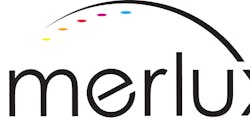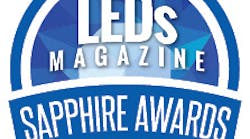This article was published in the June 2013 issue of LEDs Magazine.
View the Table of Contents and download the PDF file of the complete June 2013 issue, or view the E-zine version in your browser.
+++++
Well-known venture capitalist Vinod Khosla called for new ways of thinking about the design of lighting products that will be enabled by better LEDs in a Lightfair International keynote, delivered in an exhibit floor theater on Wednesday afternoon April 24. Moreover, the tech-savvy entrepreneur provided unique insight as to where solid-state lighting (SSL) and LED technologies stand today, and what the future holds.
Khosla led off stating, "I want to lead you down a path to somewhere lighting can go." But first he challenged the approach the industry is taking today in adapting old forms such as retrofit lamps and even ceiling fixtures to work with LEDs. He said, "You end up realizing marginal gains when you try to improve something."
Using the telephone repeatedly as an analogy, Khosla charted the course of SSL thus far, leaving what he clearly sees as a tremendous opportunity for innovation going forward. He said that prior to the development of the mobile phone, the only evolution in the telephone in 35 years was the transition from a rotary dial to pushbuttons. The mobile phone brought technical advancements at a fast and furious pace, and business upheaval as an upstart bought AT&T.
Khosla says that the SSL industry has been at the stage of the first mobile phones that were bolted to the floor of cars and called that state LED version 0. He placed the first flip phones as version 1.0 and said that the LED industry is just getting to that level. In less than 20 years, the mobile industry transitioned to smartphones with more computing power than mainframes of the era when the mobile phone was born, and Khosla expects a lighting transition on that scale.
Looking forward, Khosla sees lighting like a mobile phone — a platform upon which you can extend functionality with add-on accessories in an app-like fashion. Indeed, intelligent lighting could run software apps, although the accessories could also be in the form of hardware enhancements. Khosla mentioned snap-on features such as the optics Soraa demonstrated for its MR16 lamps on the exhibit floor. Note that Khosla is an investor in Soraa and parts of his keynote showed favoritism for that company's technology.
Khosla said that Soraa's LEDs are the first to enable a real move forward in SSL products. He said the violet, rather than blue, LEDs yield a better quality white light. And the homogeneous gallium-nitride-on-gallium-nitride (GaN-on-GaN) device architecture delivers more light and, most importantly, reduces thermal issues.
Thermal obstacles have been a major issue for the industry. Citing the relatively common practice of integrating active cooling in a lamp, he said, "That sounds like as bad an idea as I've heard in a long time." Khosla said the industry needs to avoid the thermal problem rather than trying to fix it. He said thermal issues were 90% of the challenge in designing LED-based MR16 lamps, but Soraa LEDs eliminated that problem.
Khosla didn't predict the future but rather challenged the audience, asking if LED light is free and heat is no obstacle, what will you do with it? An extensible lighting platform with apps for mood lighting, networked communications, and other features are "all things lighting people can make money at," said Khosla.






